The pound's fall: A tale of two cities
- Published

Times Square
Rob and Chloe are sharing a small Starbucks while admiring the bright lights of New York's Times Square. Coffee cost? Almost $5. They've also had a cake and a sandwich. $16-plus.
Based on the exchange rate they got back in Kent, nurse Chloe estimates the total cost was around £17. "Given where we are I suppose it wasn't too excessive," she says. "But I think it's the most expensive coffee I've ever bought."
Lunch, in the heart of Little Italy, was also an eye-opener. Two margherita pizzas, two glasses of wine, and tip (obligatory everywhere): $96.
'Watching the pennies'
Chloe said: "We are watching the pennies. It's not spoiling our trip... but there are things we thought we'd do that we won't now."
They'd come to Times Square for discounted tickets for Broadway shows. Even these were too pricey. "We'll give it a miss this time," says Rob, who, like Chloe, did not want his surname used.
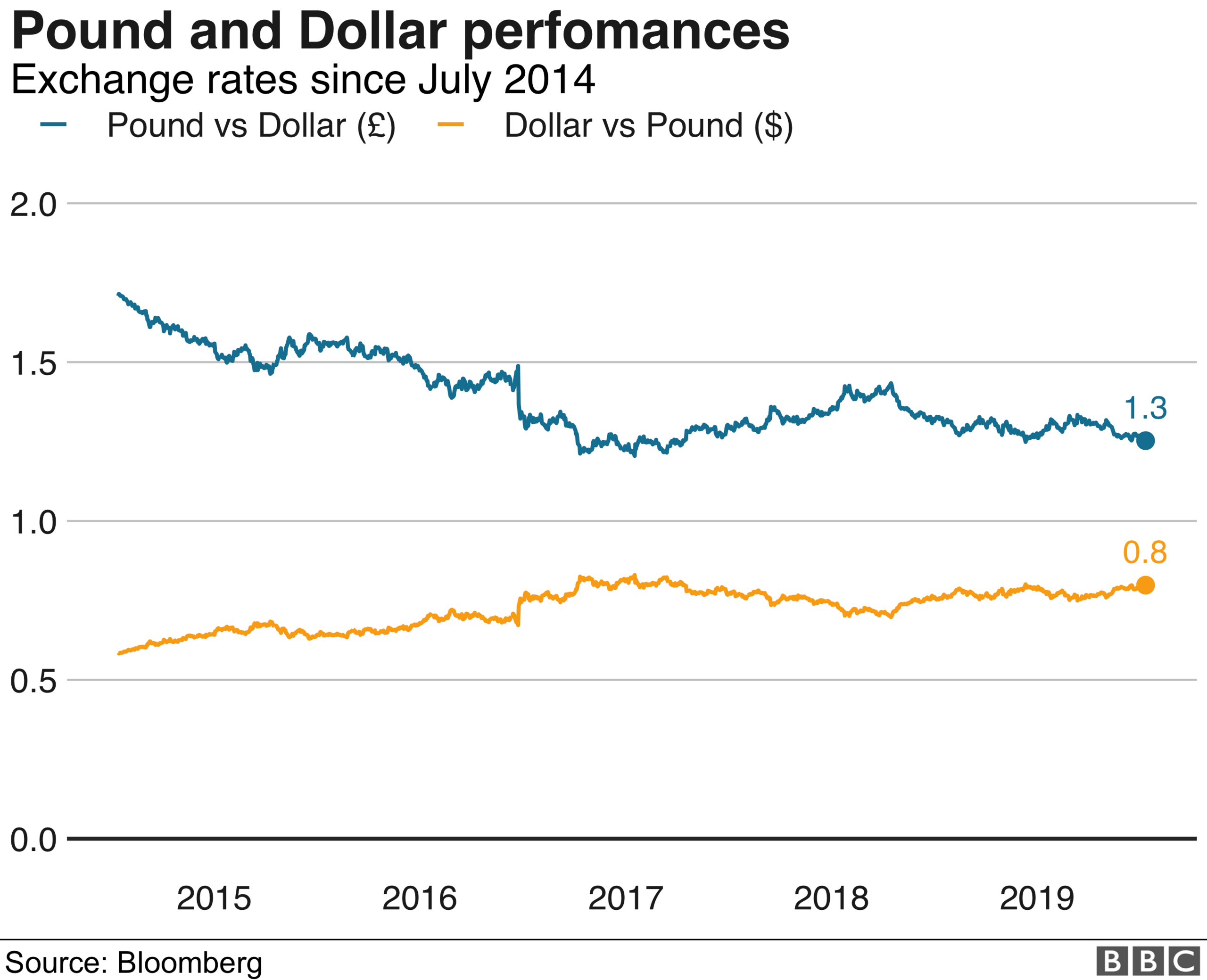
Like tens of thousands of UK tourists, the couple picked an expensive time to visit America.
This week sterling hit a more than two-year low against the dollar, trading below $1.25, a rate not seen since April 2017. But these are commercial rates. Tourists get a worse deal when exchanging currency.
And yet, sterling's recent weakness has failed to dent visitor numbers.
According to the US Department of Commerce, 1.8 million Britons visited the US in the five months to 31 May, 8.2% up on the period in 2018. The overwhelming majority were tourists and people visiting friends and family.
For 2018 as a whole, 4.7 million visited, up 4% on 2017. This, though, is below the peak year of 2015 when 4.9 million people visited.
But analysts doubt the numbers will hold up for the rest of 2019. Indeed, Adam Sacks, president of Philadelphia-based Tourism Economics, thinks the official data over-estimates the picture.
'Defying gravity'
For a start, airline passenger growth from the UK to the US is up only 4%, he said. "Right now, the market [from the UK] is defying gravity."
It helps that the US is a bucket-list attraction. "That will always underpin tourism," he said.
But with sterling facing more headwinds because of Brexit, economic slowdown, and trade wars, "I'm expecting inbound total traffic for the year to end about 2.5% up on 2018," he said.

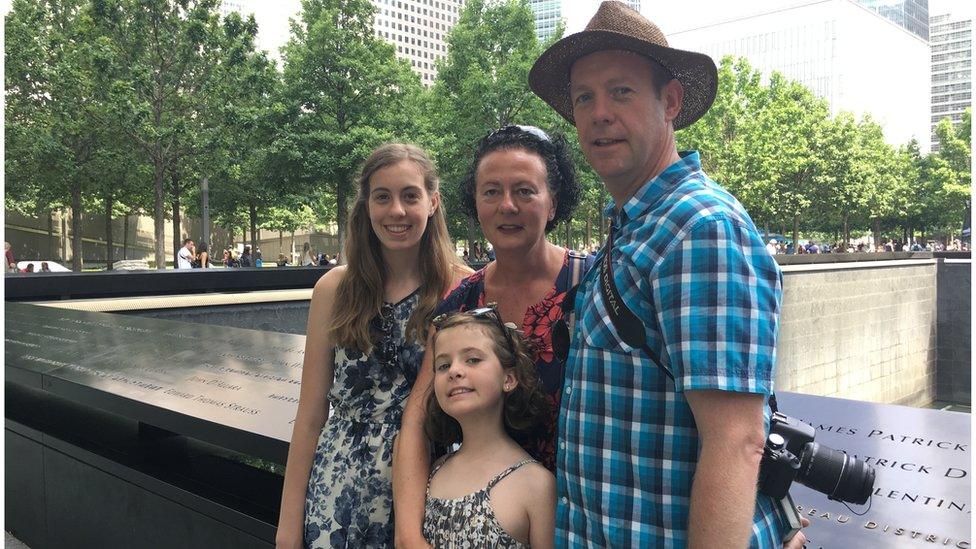
It's not the first time the Strattons, from Hatfield, Hertfordshire, have visited New York, but it's probably the most expensive.
They booked their hotel and flight last year, so think they got a better deal than now. "And we're aware of all the free and discounted attractions that are available," says Annette. She advises visitors to do their research and seek these out to save money.
But, Richard says: "Eating out for the four of us is very expensive - $100 a time at least. Sales taxes and tips mean costs soon increase. Even the hotel charges for wifi use."
They've split some breakfasts and drinks between them to help cut costs. And they had hoped to take in one of Broadway's blockbuster shows - hopefully Hamilton. "But not at $1,200 for the family," said Richard.
Annette says that when you're on holiday there's a certain "pay what it takes" attitude. And daughters Georgia and Kerensa say they are loving their trip - which as parents know, is what matters most.
The girls are especially looking forward to next week, when they visit Florida's amusement parks. Mum, though, thinks it could be even more expensive than New York.

Chris Heywood, an executive at New York's tourist board, NYC & Company, says it would take a sustained and prolonged sterling depression to hit hard the number of UK visitors to his city.
Britons make up the single biggest group of overseas visitors, with 1.26 million seeing the sites in 2018. The number has grown steadily since 2012, when one million visited.
"People are planning their visits better. More come in the first three months of the year, when hotel rates drop," he said. His single biggest piece of advice: "Check our website. There is so much free stuff to do."
'Not a shocker'
In London, however, Americans are getting slightly more bang for their buck.
Joy Smith, from Colorado, was in London to meet her daughter, Reilly, who was on the final stop of a six-week European tour with husband Seth before the couple return to Texas.
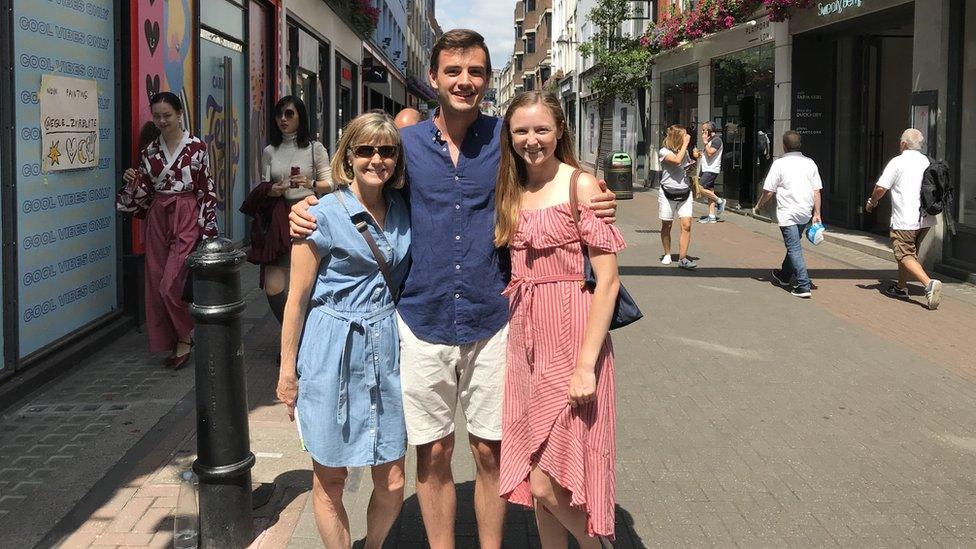
Joy Smith with her daughter Reilly and son-in-law Seth
Joy said she was expecting prices to be higher but, in fact, the cost of food was "very comparable" to prices back home.
But the Baycroft family had a different London culinary experience. Johanna, had just bought her son, Cougar, a meal at McDonald's, which she said would have been almost half the price at home in Washington state.
Nevertheless, prices overall were lower than she had budgeted for, although she had prepared for the worst and saved money by staying with her sister.
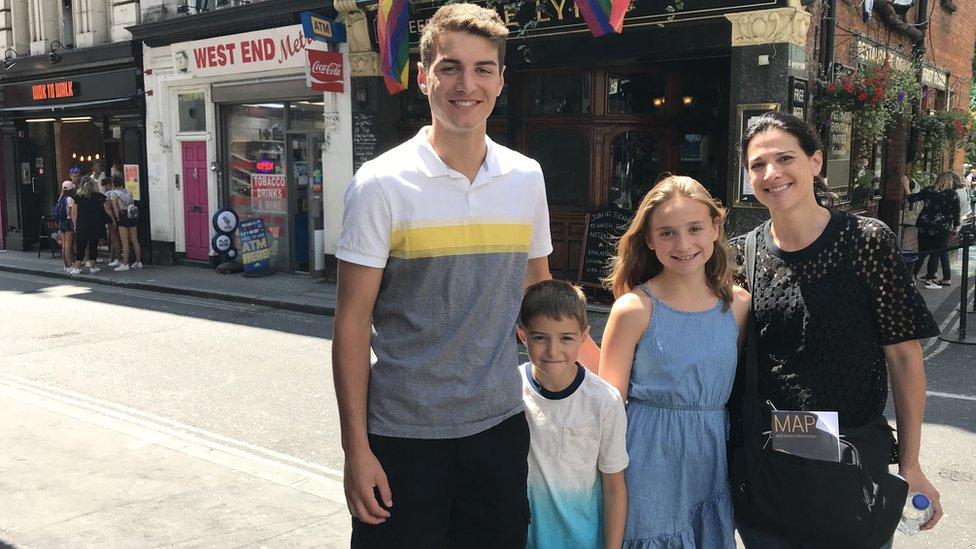
The Baycrofts: Thomas, Cougar, Victoria and Johanna
Bob and Priya were leaving Hamley's with their two daughters, who had bought two teddy bears. The couple were used to New York prices so London "wasn't a shocker", Bob said.
The EU referendum in June 2016 knocked the value of the pound, making things cheaper for US tourists. Before the vote, $1 was worth around 68 pence. It's now worth about 80p.
And that spurred a big increase in the number of people crossing the Atlantic. The Office for National Statistics recorded a 13% jump in the number of Americans arriving in London in 2017, with 2.6 million visitors spending about £2.2bn - when $1 was worth an average of 81 pence.
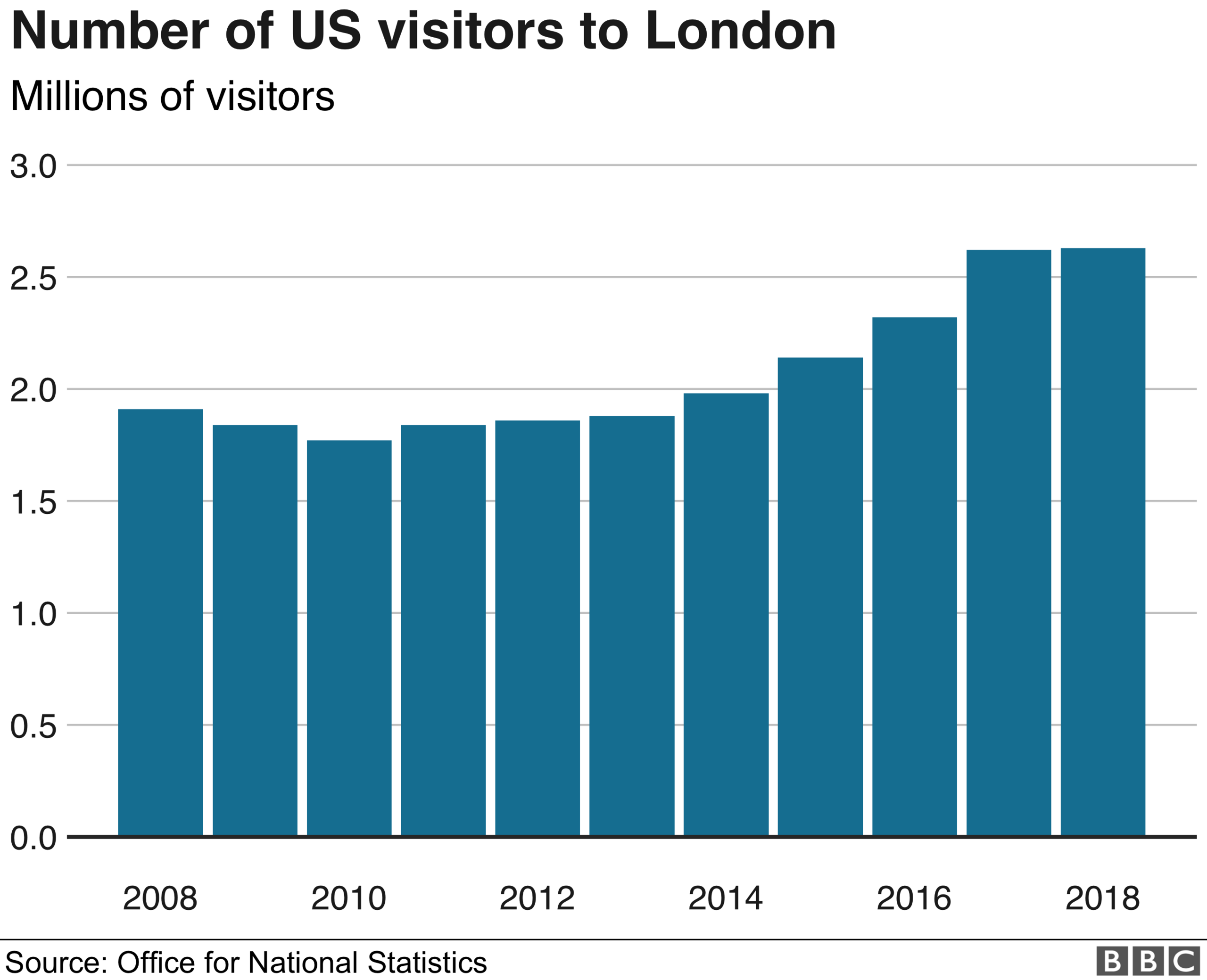
That helped to offset a slowdown in domestic spending, according to Henry Gregg, from the New West End Company, which represents Central London businesses.
"For domestic shoppers, it's bad because they see prices increase," he said. But it's good for international shoppers who can take advantage of the "big pricing differential" in the short term, he said.
Luxury brands have been the biggest beneficiaries of the increase in spending by US tourists, Mr Gregg said. Budget retailers like Primark have also benefitted. It's been "middle of the road" clothes stores like Topshop that have missed out, he said.
While the number of Americans visiting London increased slightly in 2018, they cut back on spending, forking out £2bn, 8% less than the previous year.
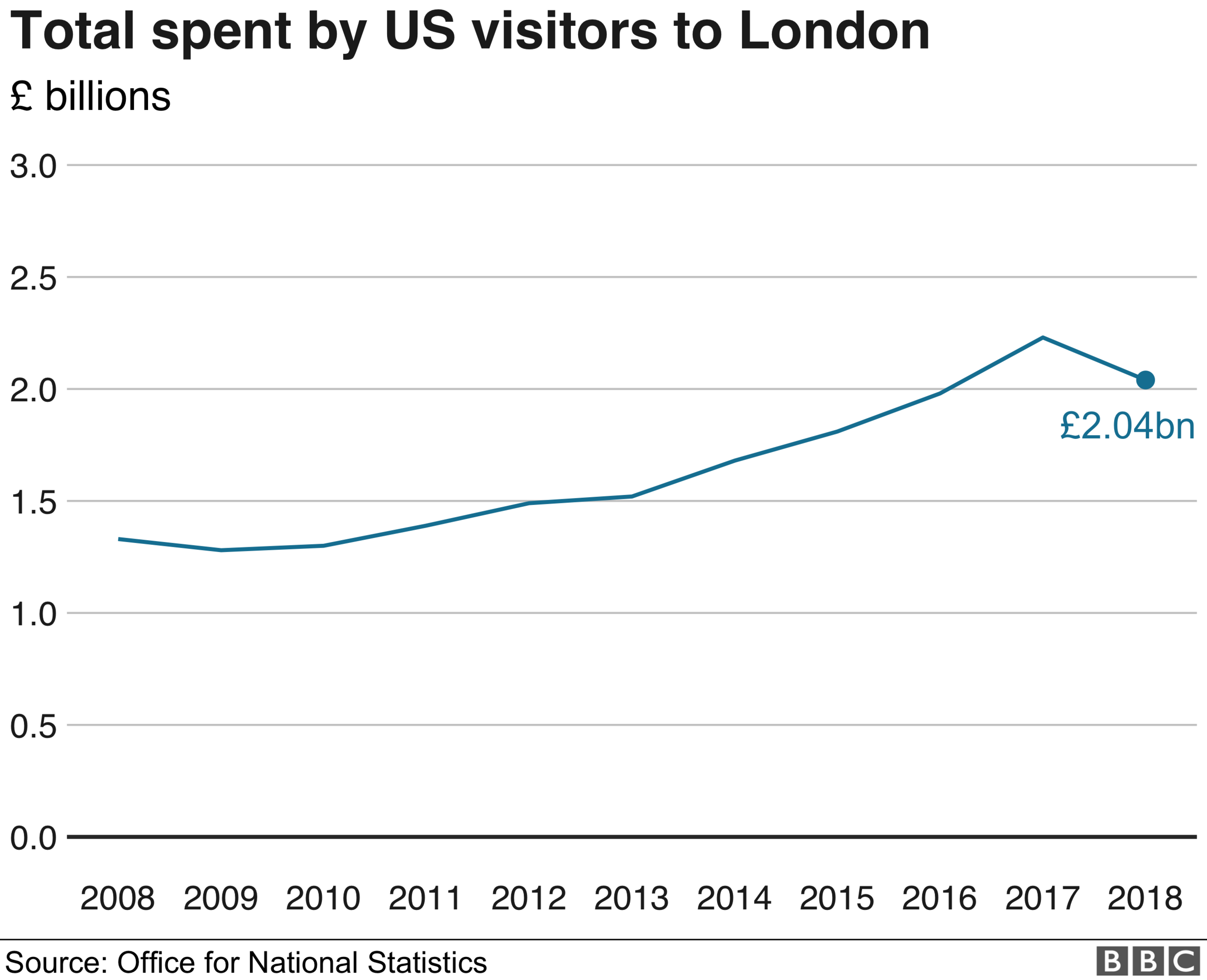
Mr Gregg puts the tightening of purse strings down to a normalisation as retailers increase prices to reflect an increase in costs as a result of an unfavourable exchange rate for importers.
But that's not deterring Americans from bringing their tourist dollars to London, according to the New West End Company, which also tracks room bookings - an early indicator of visitor numbers.
It said projected visitor numbers would rise 4.8% for June-to-August.
London, like New York, is on the must-see list of most tourists. Exchange rates may fluctuate, but the lure of the bright lights remains.
- Published11 July 2019

- Published9 July 2019
